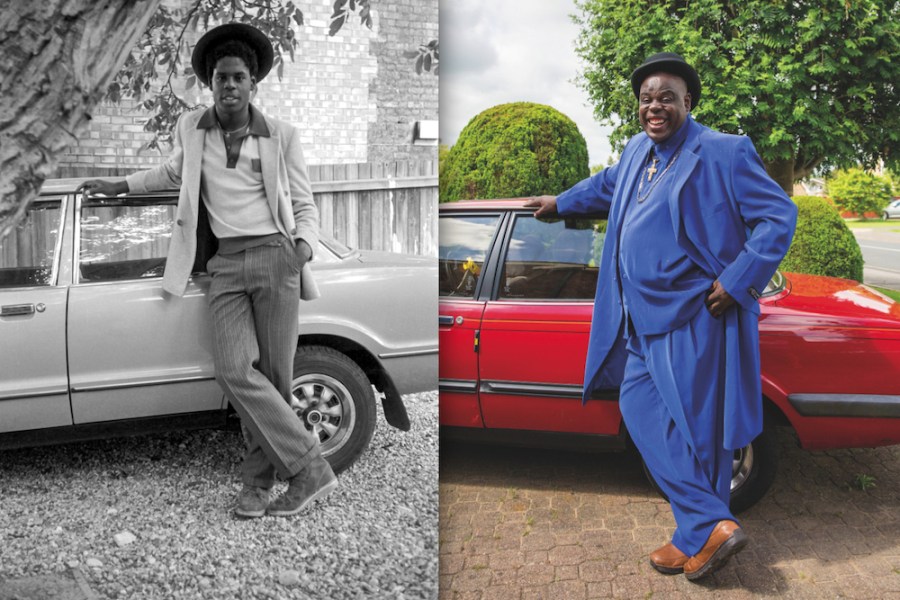Steve Fairclough spoke to Chris Porsz about his amazing portrait project ‘Reunions’ that saw him recreating street portraits in Peterborough with the same people, often more than 40 years apart. With ‘likes’ on Instagram from the legendary photographer Sir Don McCullin, Chris Porsz is clearly doing something right. Here’s the inside story of ‘Reunions’…
Chris Porsz describes himself as ‘an accidental photographer.’ He reveals, ‘In the early ‘70s I hitchhiked across Europe and North Africa with my girlfriend, later my wife, with a Kodak Instamatic. I remember I took this picture of a camel and when I got it back two weeks later, from Bonusprint or wherever, it was like a little dot. So, I thought, “OK, I need to upgrade [my camera].”’
His first child was born in 1978 and he says, ‘like most parents, you start taking pictures of your kids. I went from the classic route – from Prakticas to Zenit, Olympus Trip – that sort of stuff. I did a bit of darkroom, but I was really very amateurish. I ruined lots; it didn’t survive my butchery.’
Chris says he was inspired by the likes of Picture Post, Bert Hardy, LIFE magazine, Don McCullin and Larry Burrows’ Vietnam photographs. He adds, ‘One of the books that really inspired me, I’d recommend it to anyone, was Harold Evans’ Pictures on a Page, which is incredible. It’s still useful because it has 100 to 150 years of iconic press photography and how those pictures were used or abused. I learnt a lot from that… the basis of cropping and the difference that cropping can make to a picture was useful. But, other than that, I mainly just wandered around aimlessly on my own snapping… and that’s what I do today as well.’
Dating back to 1980
What has become his Reunions portrait project dates back to 1980 and originally went up to ‘about ’85 or ‘86’, during which times he ‘just wandered around the streets of Peterborough with my camera. It was always about the people. I regret that in some respects because I realise now that the backgrounds and buildings are so important, and you get very nostalgic about it. I was maybe a bit shy, so it was maybe more often with a telephoto lens and shooting the backs of people and then I changed completely and now it’s a wide-angle lens and get it all in.’
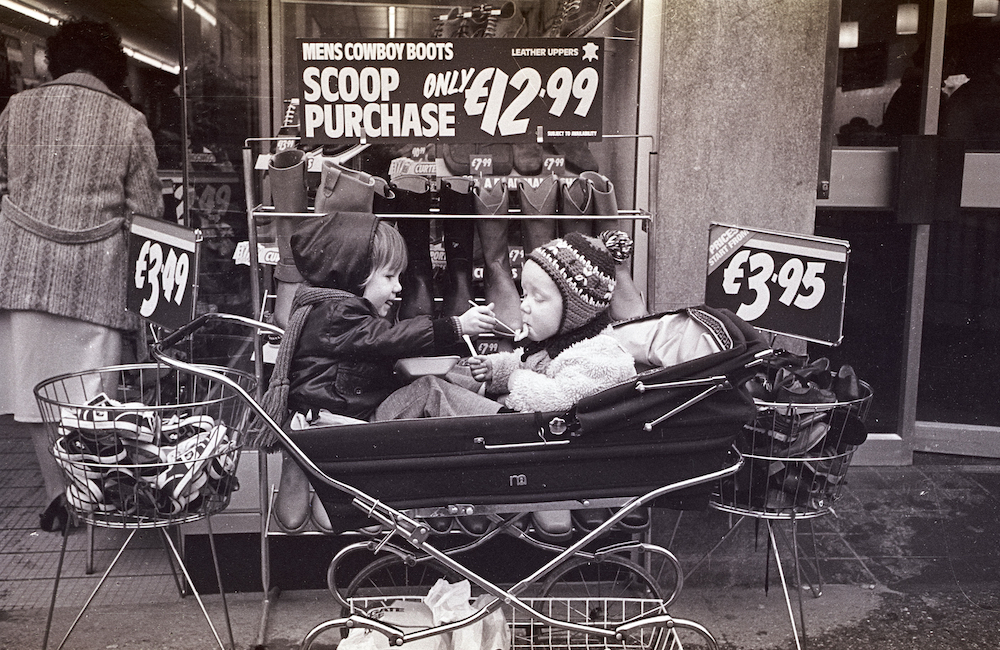
Mark Court, left, and his brother Matt eating chips in 1980 while their mother shopped in Bridge Street, Peterborough. © Chris Porsz
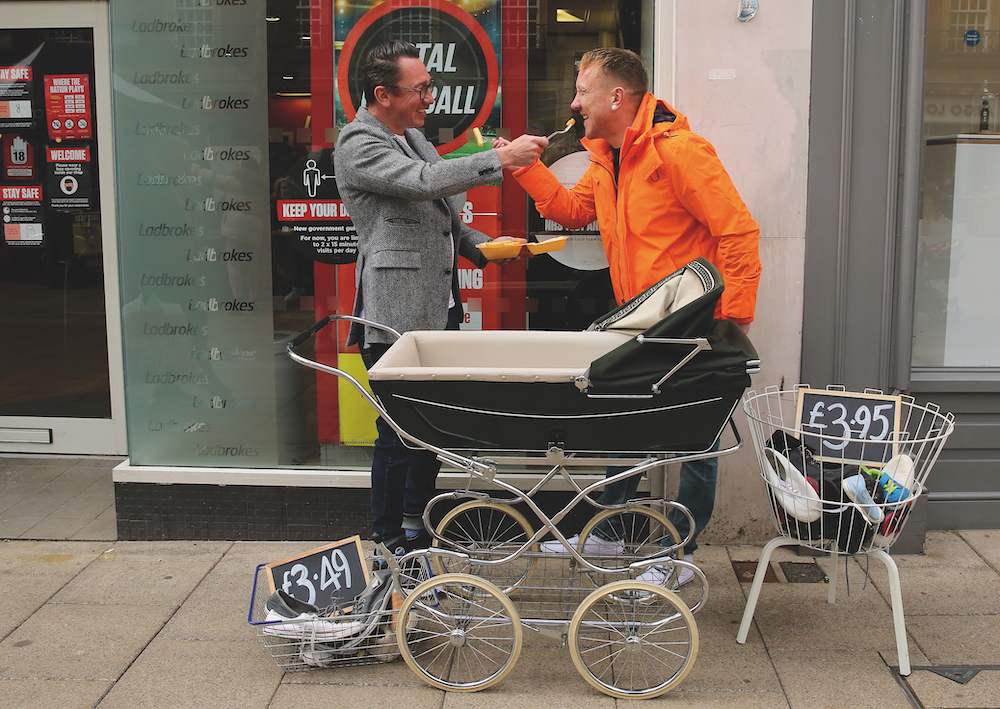
Mark Court, left, and his brother Matt pictured eating chips in April 2021. The brothers went to school with Chris Porsz’s children and now live in Birmingham. © Chris Porsz
He shot images of local people in Peterborough town centre, on a railway platform, inside and outside shops, buying ice cream, on streets and at various outdoor venues, such as funfairs. But the arrival of children, and a busy career as a paramedic, put his photography on hold for almost 25 years.
He admits he, ‘sort of fell out of love with photography’, but his passion was rekindled in 2009 when he sent some if his images of Peterborough in the 1980s to the local paper, the Peterborough Evening Telegraph. Chris reveals, ‘amazingly, they loved them and they gave me a column – Paramedic Paparazzo.’
Some local people started recognising themselves in the published pictures and Chris had his ‘lightbulb moment’, when he asked himself ‘perhaps I can find them?’ That long search began in 2009 and over the next five years he tracked down the same people, often via social media. When possible, he photographed in the exact same locations and poses that he’d original shot them in decades earlier. The work was published in the 2016 book Reunions, but that was far from the end of the matter…

Lollipop lady Gloria Steele sees (from left to right) Mazia Ahmad, Gulfraz Umar (nee Malik) and Tanya Porter across the road at Queen’s Drive School, Peterborough, 1984. © Chris Porsz
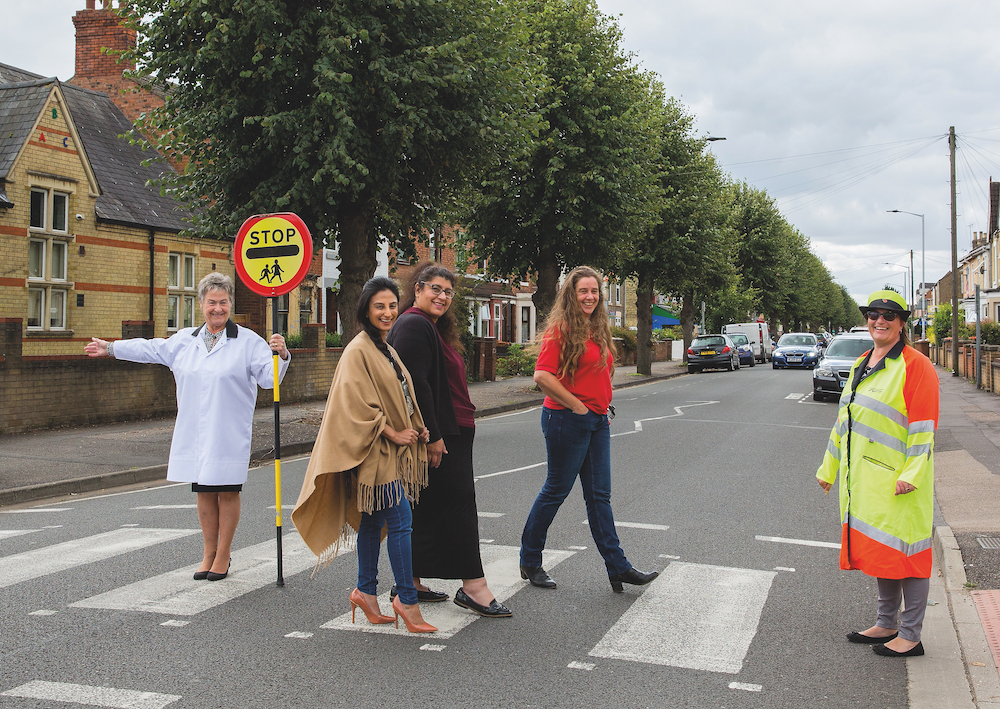
Former lollipop lady Gloria Steele (wearing Tracy Hutchings’s, far right, uniform) sees (from left to right) Mazia Ahmad, Gulfraz Umar (nee Malik) and Tanya Porter across the road at Queen’s Drive School, Peterborough, September 2020. © Chris Porsz
Chris decided to continue with more Reunions. He explains, ‘What really got me going again was digital. The fact that you could instantly see your images and you could take as many as you want, really got me going again. Fortunately, I took pictures of a lot of the youngsters – it would be frowned upon now – but back then that’s what people did. A lot of the older people have died now, so [if I’d just photographed them] I wouldn’t have a book. So, it was good that I took [pictures of] the youngsters.’
Retirement & Reunions 2
After retiring as a paramedic in late 2020, Chris took the time to put together a second book – Reunions 2 – as the first book had left quite a few people still to be re-photographed. By this time his journey through cameras had taken him from that Kodak Instamatic camera to the Canon EOS 5D Mark III with a 24-70mm zoom lens. He admits, ‘I also wanted to bring those 1980s mono pictures alive to a certain extent.’
He talks us through his equipment journey and says, ‘I started with a Kodak Instamatic, then it was a Zenith – they were solid cameras – and a Praktica. Then it was an Olympus Trip and a Canon AE-1. That was about it back then. It was the standard lens and sometimes a telephoto lens. I also had a wide-angle lens back then. I realised with a telephoto lens I was sometimes blurring out backgrounds. But I’ve now changed my style and it’s very much taken with [Robert] Capa’s quote in mind, “if your photograph’s not good enough, then you’re not close enough.” So, I went through the Canon Ds – the 60D and 70D and then I went for the 5D Mark III. Now it’s almost exclusively with the 24-70mm lens, which I tend to keep fairly much on the wide-angle end.’
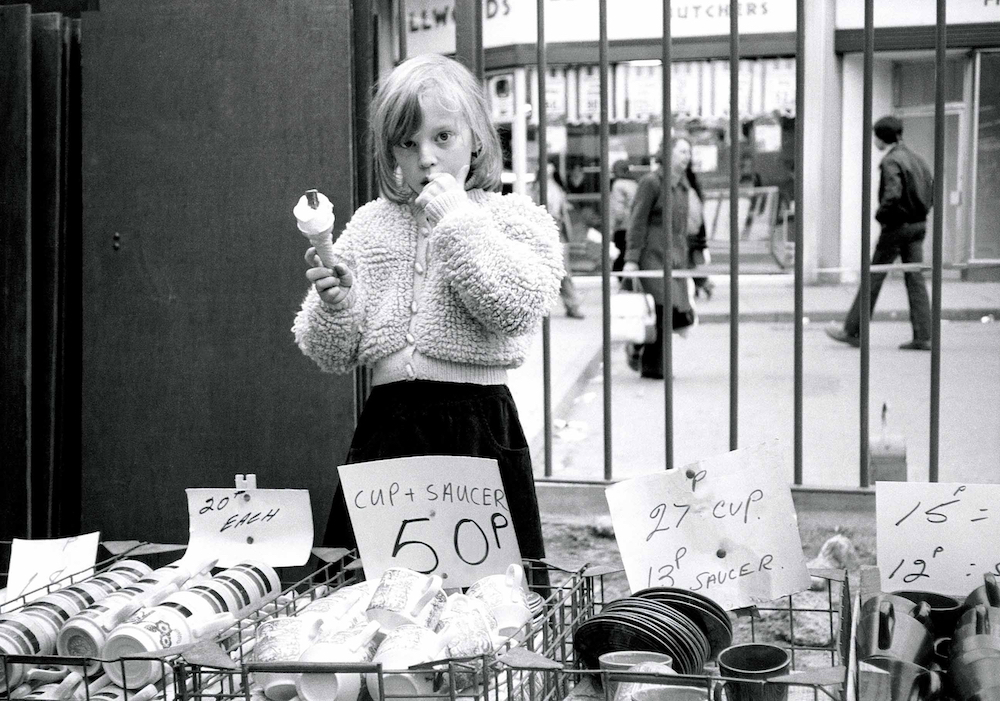
Flake, ice cream and crockery – six-year-old Alli Winter at Peterborough market, 1983. © Chris Porsz
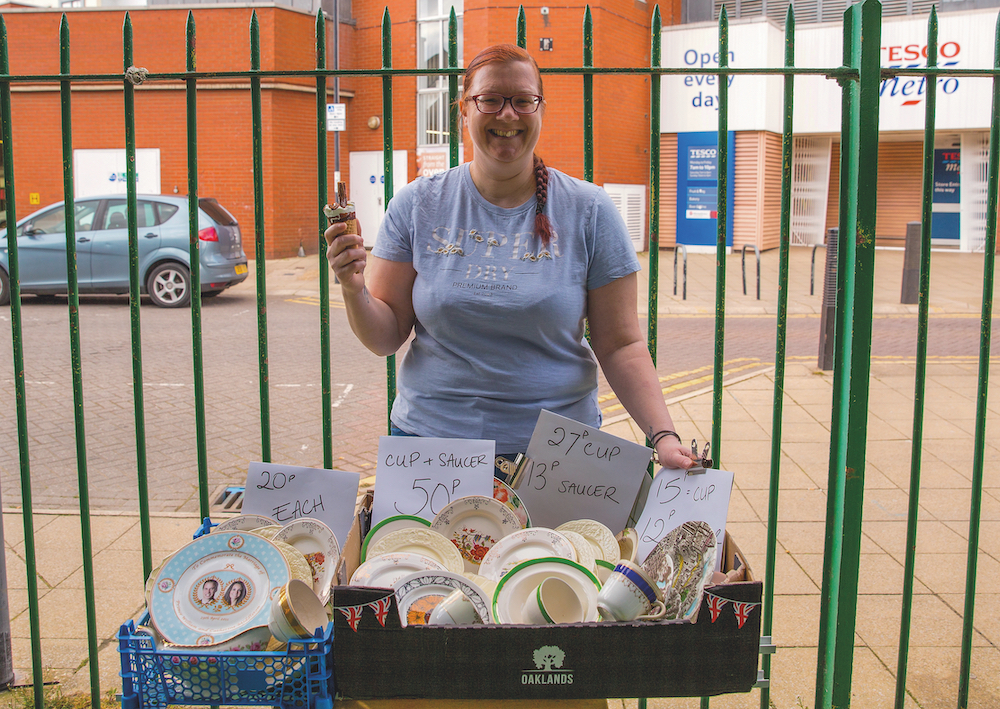
Alli Winter in April 2021 with props provided by the Salvation Army superstore, Long Causeway, Peterborough. Alli’s mother had spotted the original photo on Facebook. © Chris Porsz
Chris adds, ‘I try to keep it simple because I’m not very technical. I absolutely have to make sure I have a fast shutter speed and a good depth-of-field. Sometimes I will, literally, shoot from the chest because I don’t want to waste time putting it up to my eye in case I might miss the moment. Maybe I’m constantly searching for a “Cartier-Bresson Decisive Moment”. I think he said your first 10,000 pictures are your worst and that’s true.’
He continues, ‘I got a compact camera so I’d not have to carry all the heavy gear round and it would make me less conspicuous. But I found it a bit fiddly and a bit slow in focusing. When I’ve got an SLR I know I’ve taken a picture and I get round that problem of conspicuousness by playing the sort of “lost tourist” and just wandering around and being part of the scenery. The camera is obviously important, but it is all about putting the miles in and taking lots of pictures.’
Favourite images
Chris cites some of his favourite images as including a hospital porter, called Paul Smith, who originally stood by a Ford cortina car but decided to wear a bright blue suit for his Reunion shoot. It suited Paul’s personality as he is now a gregarious DJ on local community radio.

Paul Smith with his Ford Cortina in Cobden Street, Peterborough, 1980. © Chris Porsz
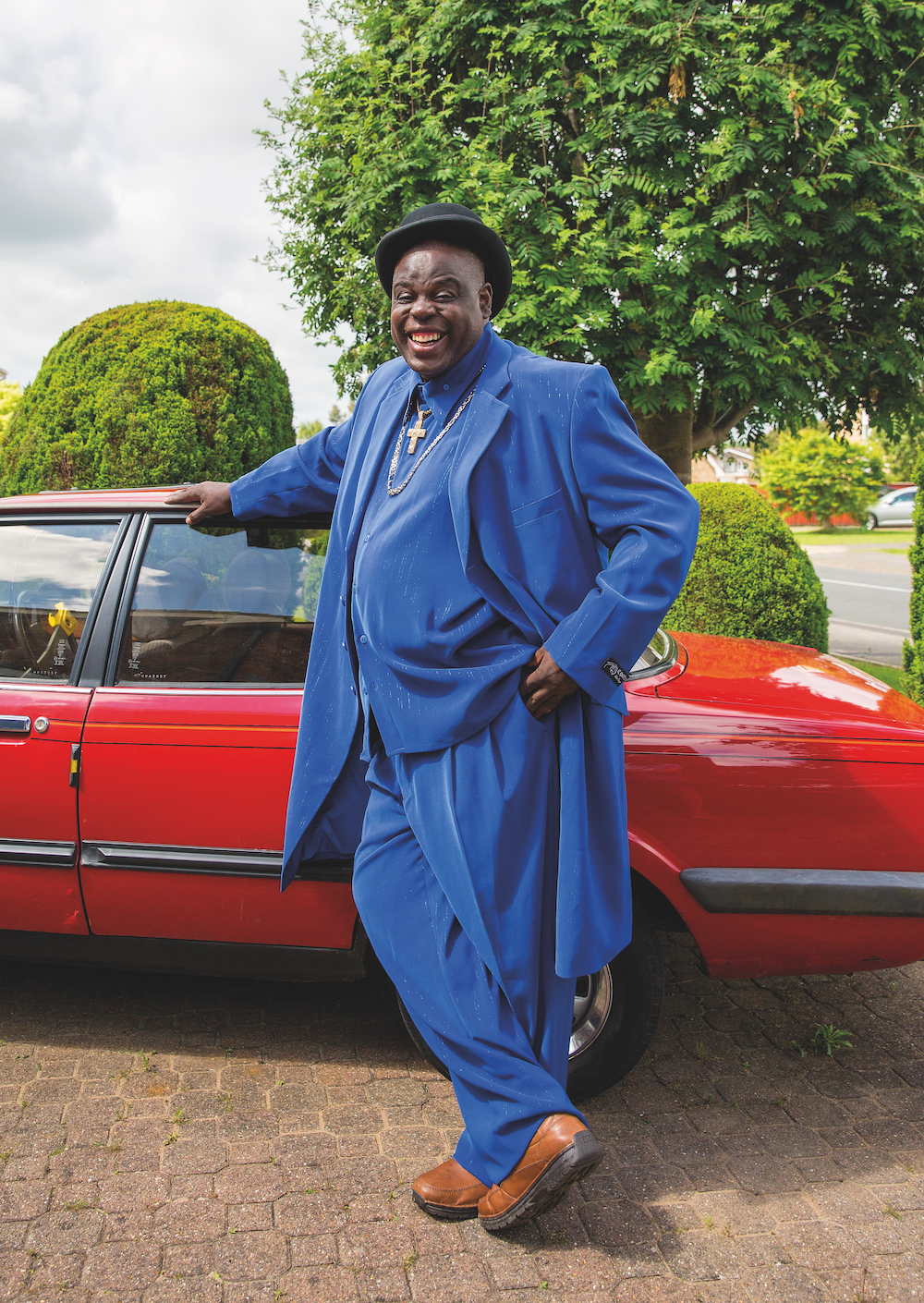
Paul Smith, 41 years later in 2021. Smith is now a DJ on Peterborough Community Radio. © Chris Porsz
Although he couldn’t trace a man for the original 2016 Reunions book, Chris later managed to track down the dapper commuter who he’d photographed in front of a billboard advertisement for The Times newspaper on Peterborough railway station’s platform. The man, Bernard Norman, turned out to be the former chief executive of the now defunct travel company Thomas Cook, who, every Monday morning, would take a train to Heathrow, fly to the US on Concorde and be back in Peterborough by Wednesday. Rather than risking trying to get permission to photograph a donkey on the platform of Peterborough railway station, the Reunions 2 shoot, with a now retired Bernard Norman, involved a farm location, five donkeys and lots of carrots!
Chris recalls, ‘I took one picture [of Bernard Norman] back then and with digital I probably took 100. I knew I wanted that picture where the donkey almost dislocates its jaw, like that original cartoon [advert] picture. It’s funny, I’ve got a terrible memory but I remember most of the pictures I took back then and I remember being on that station composing and thinking, “right, I must get his head in those jaws”, so it was just right.’
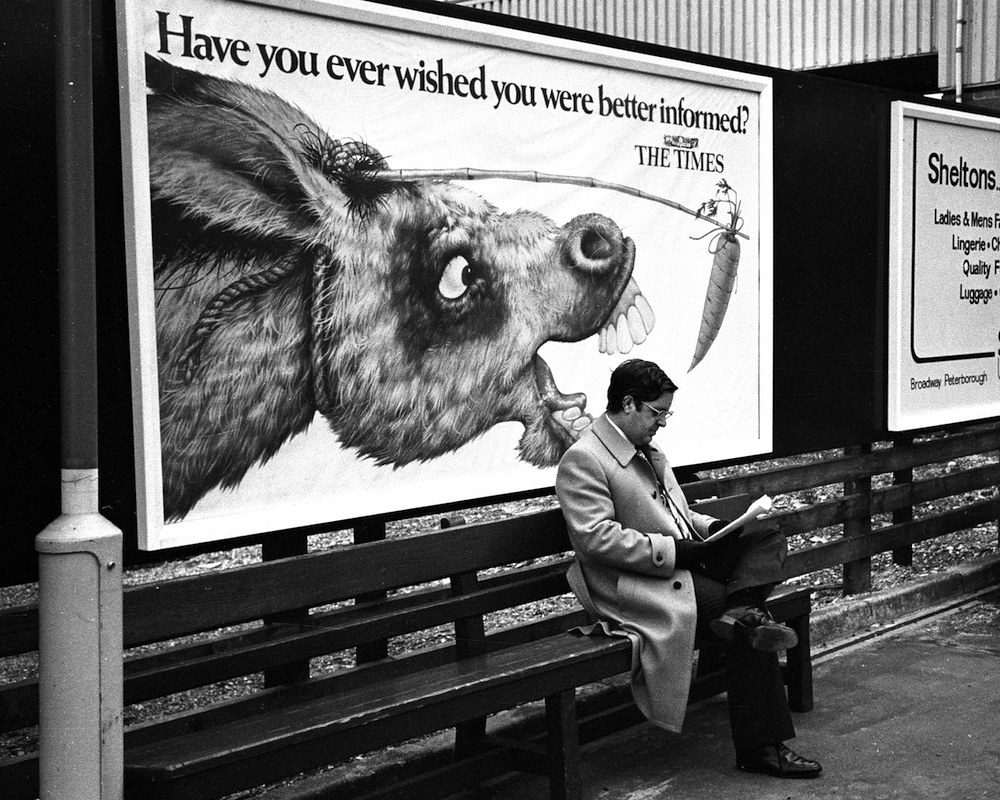
The then director of retail operations at Thomas Cook, and later CEO, Bernard Norman, waiting for a train at Peterborough railway station in 1981. © Chris Porsz
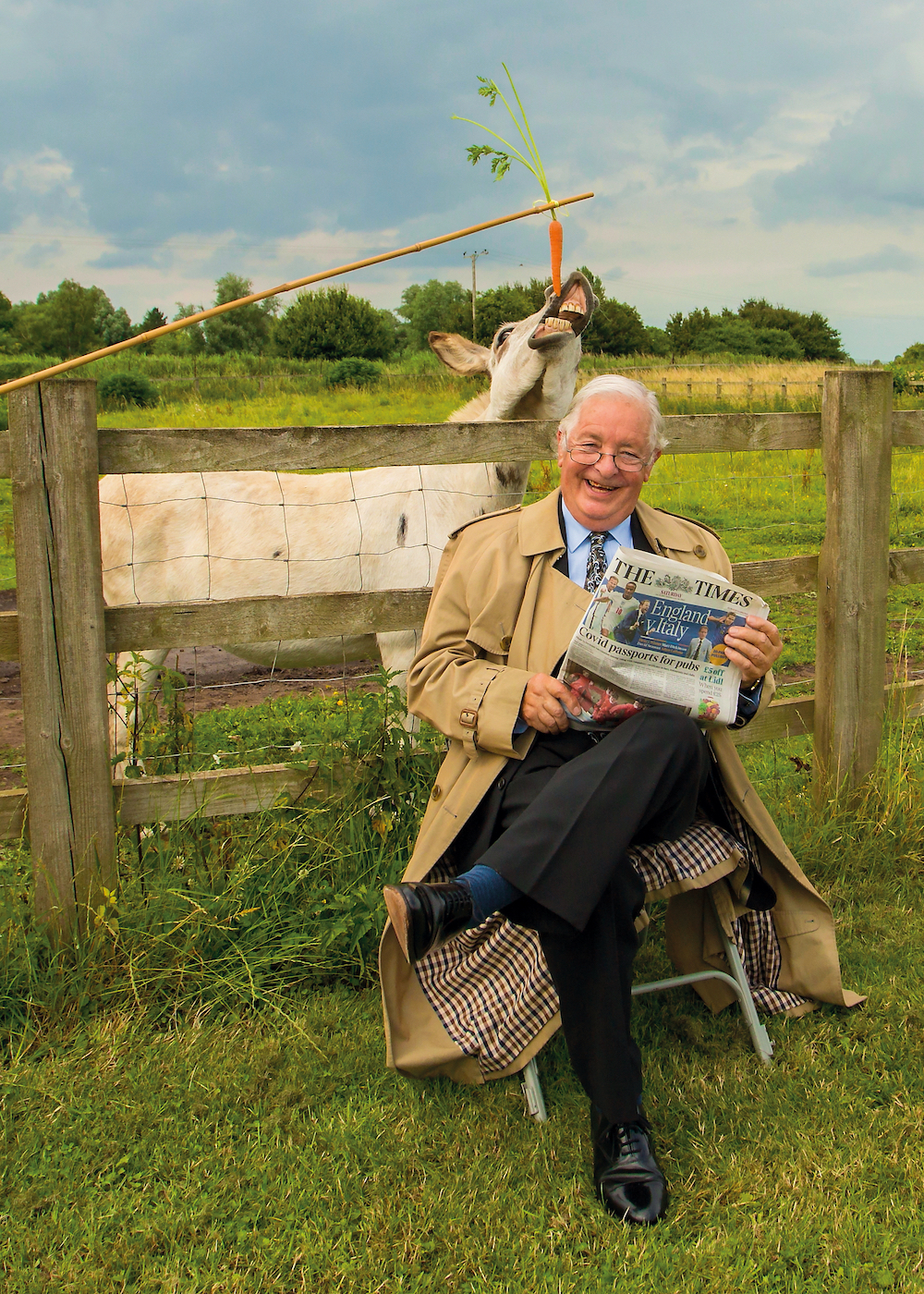
In July 2021, a retired Bernard Norman reads The Times with a donkey and carrot behind him. © Chris Porsz
Chris would share some of his original 1980s images on social media and either the actual people would recognise themselves or those close to them, usually relatives, would reply. In fact, many of those he had photographed and then re-photographed decades later have become friends. He reveals, ‘That’s the other nice thing. These were mostly completely random strangers. I mean Peterborough is not a massive place – it’s about 200,000 people. I think this [project] would be quite hard to do in a big, sprawling city centre, like London. So, that helped and often people either tend to stay or come back [to Peterborough]. It’s actually great for street photography. So, during this process, they absolutely become good friends. It was almost like a Reunion for me as well!’
18-hour days editing
For Reunions 2, Chris explains, ‘I went through my terrible filing system and I pulled out about 300 pictures that were people I couldn’t find last time. I was a bit obsessive and I wouldn’t take “no” for an answer because people were very often reluctant and were camera shy. There was a lot of persuasion and cajoling. But I had this unshakeable belief that this project was unique.’
He adds, ‘For example, there is a picture of Mr. Gino with his ice cream van and there’s a little Asian girl buying an ice cream. For the first book I couldn’t find her, but the second time round we did. We got an ice cream van back to exactly the same location and it was like a second bite at the cherry, so that was good.’
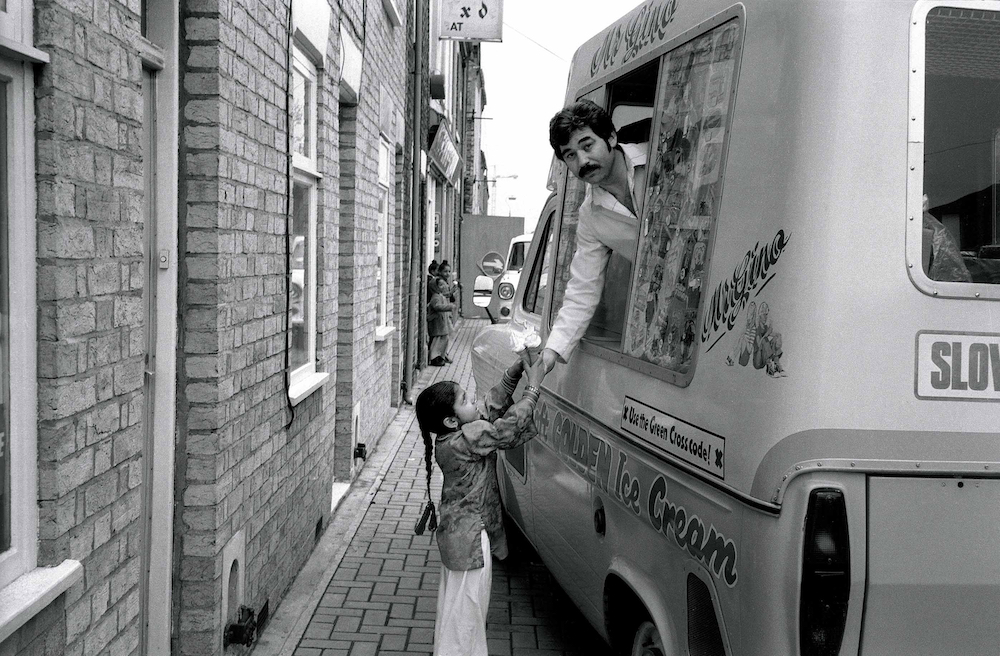
Ice cream seller Genesio Borrillo (aka Mr. Gino) pictured serving Zahida Parveen, 1980. © Chris Porsz

Former ice cream seller Genesio Borrillo pictured serving Zahida Parveen at a borrowed ice cream van, May 2021. Borrillo now runs a pasta shop in Peterborough with his family. © Chris Porsz
He eventually shot 168 Reunions for his second book and had to stop in order to get it published. He reveals ‘when I retired I had more time. It was 18-hour days at the computer [editing]. What kept me going was this unshakeable belief that this is important. I’m a great believer, like in photography, in seizing the moment while you can.’
Chris admits it was tricky to edit down the photographs. ‘I’m not very technical. It’s important to have a decent camera but it’s equally important to put the miles in, take lots of pictures, learn and to always have your camera with you at the right settings. I can do a bit of Photoshop. I’m not very good at it but I use the Canon Digital Professional software. For example, I only discovered RAW two or three years ago. The medical photographer at the hospital said, “Chris, you’ve got to get RAW,” and I learnt the advantage of it.’
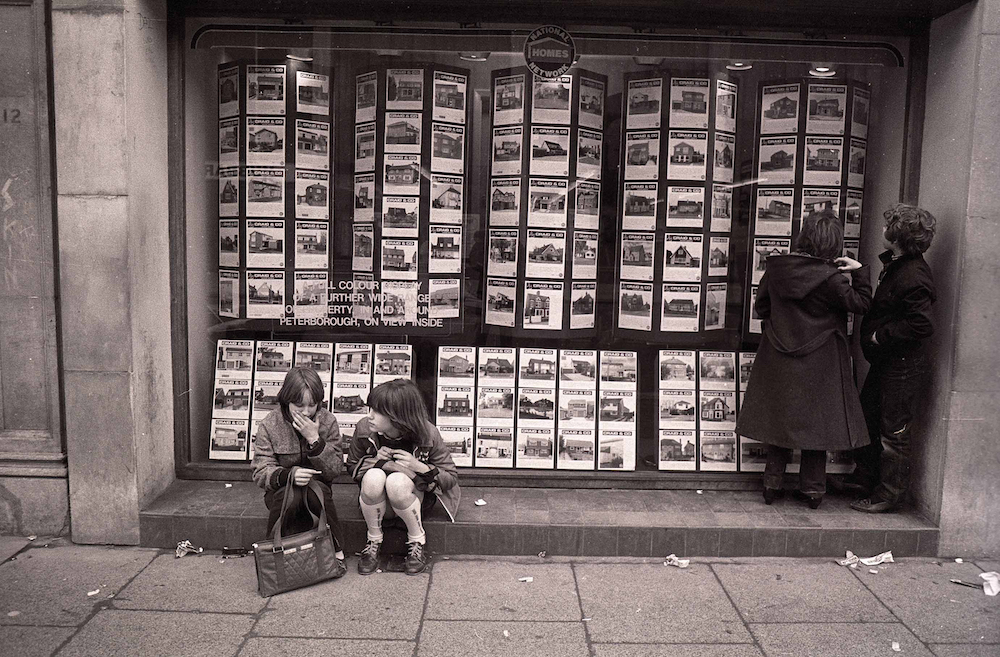
Friends Angela Baxendell (nee Leask, left) and Beverley Barkley (nee Knight, right) waiting to catch a bus outside Craig’s Estate Agents in Broadway, Peterborough, 1981. © Chris Porsz

Friends Angela Baxendell (left) and Beverley Barkley (right) met for the first time in 32 years for a Reunions photo shoot in August 2020. © Chris Porsz
Unique & fascinating
Chris has ended up with a fascinating, unique look into Peterborough’s places and people over a 40-year plus period and says, ‘On the whole, I was fairly satisfied. There were about 20 or 30 I would have liked to have shot again, that didn’t happen. But, on the whole, the successes made up for all of those disappointments.’
As to the success of his Reunions projects, which have featured in major publications in the UK and beyond, Chris explains, ‘It’s the emotional aspect. People ask is “why has it been so popular throughout the world?” I think it’s because the location is almost incidental. It’s the concept that here are complete strangers… I had nobody’s details. If I‘d taken details it would have been a lot easier, but I didn’t because I didn’t know what I was doing. I had no idea and I didn’t have the foresight to say, “You know, I’m going to do this in 30 years time.”’
He continues, ‘I think, visually, it’s such an obvious thing. You see an image of people, they’re complete strangers, and then you see those people again and, straightaway, people get it and think, “yeah, those are the same people.” I think it’s also very positive in these terrible times of woe and sadness that there’s quite an uplifting, heart-warming story there… people enjoying themselves and in happier times maybe. There’s a lot of grief and sadness in the photographs as well but, on the whole, it’s quite uplifting. For some reason, it struck a chord everywhere in the world.’
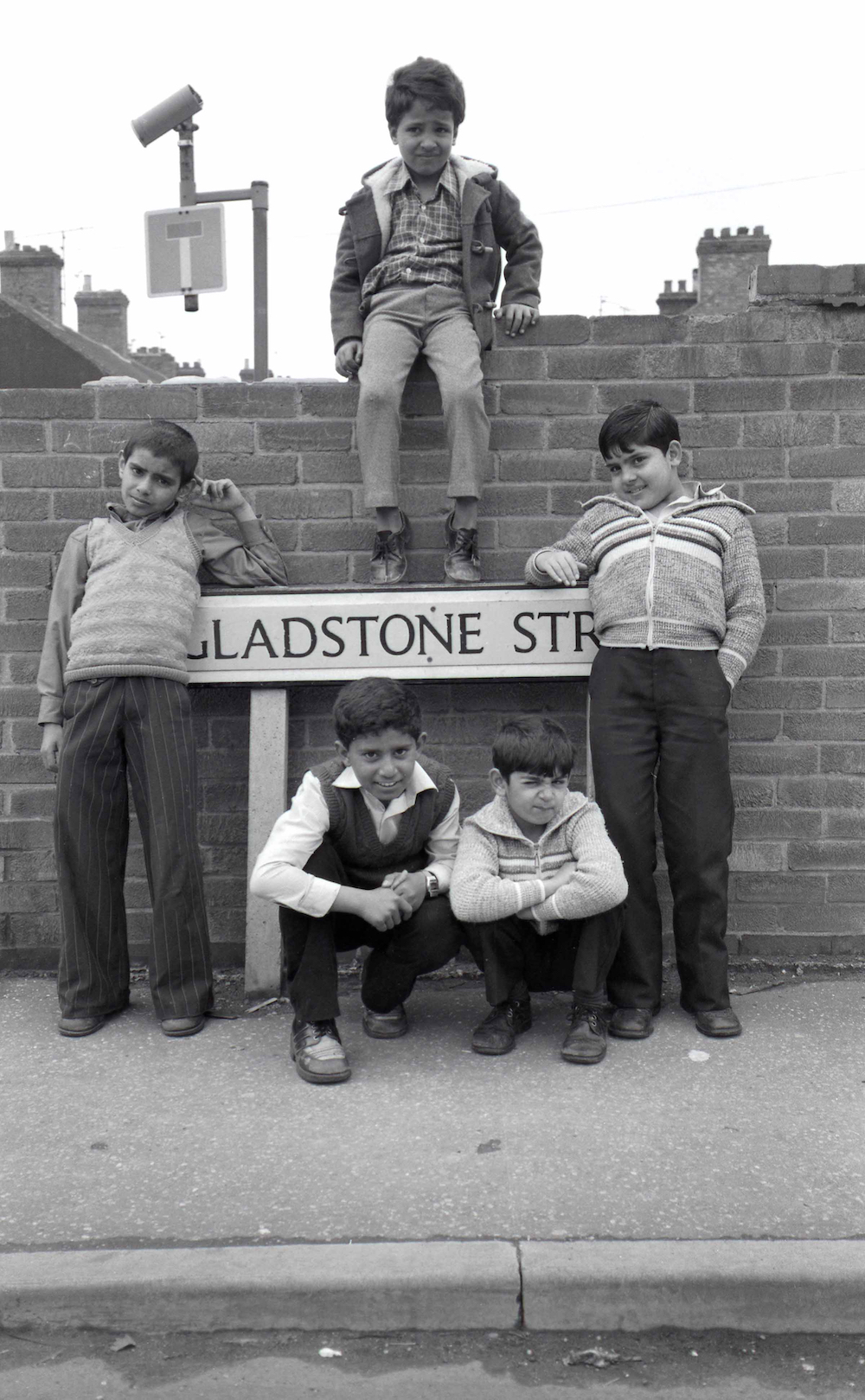
Famous Five: friends Nasar Ali (left), Ali Shauqat (middle), Mohammed Shanawaz (right), Khalid Mahmood (crouching, left) and Mohammed Riza (crouching, right) pictured by the Gladstone Street (where they all lived) road sign, 1980. © Chris Porsz

Famous Five: (from left to right) friends Nasar Ali, Khalid Mahmood, Ali Shauqat, Mohammed Riza and Mohammed Shanawaz pictured by the Gladstone Street road sign – the street where they all previously lived, May 2021. © Chris Porsz
Chris Porsz’s top portrait tips
- Try not to be a fair-weather photographer as the best images are often to be had when most sensible people stay indoors. One drop of water on the lens will invariably end up in the middle of a face, so a good lens hood helps. In unflattering harsh sunlight I try to walk on the shady side of the street.
- Always carry your camera but also check that it is primed and ready with charged batteries and extra memory cards or you will frustratingly miss that decisive moment. Keep checking all settings such as focus points as they mysteriously get altered!
- You can have the best camera in the world and produce uninspiring photographs. Walking the miles to make your own luck and have the eye to not just look, but to see.
- Poor composition is one of biggest causes of great potential images being ruined. Use your legs as your zoom lens and move around the subject to achieve a good balance and to avoid distracting spare legs, clutter, ploy bags and white vans. There’s no substitute for getting it right in-camera rather than rolling it in glitter later.
- Direct eye contact and chatting helps to relax the subject and allows you to capture some fleeting gesture that makes a stronger image.
- Wait for a character who stands out from the crowd to walk on and, if not, find another ‘stage’.
- Try to juxtapose your subject with funny adverts, newspapers or signs for a visual pun.
The Reunions 2 book

The front and back covers of the Reunions 2 book by Chris Porsz
The book Reunions 2, by Chris Porsz, is published by Chris Porsz (ISBN 978-0-9574329-6-3). Part of the proceeds from the book will go to Breast Cancer Research. To find out more and order go to Chris Porsz – Street Photographer
Chris Porsz
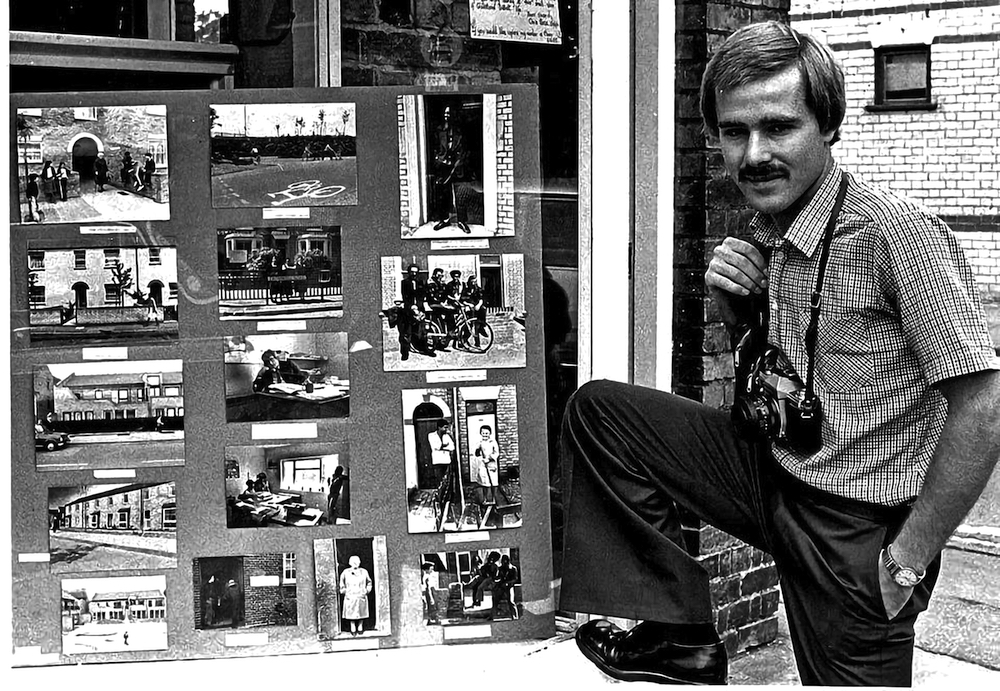
Chris Porsz pictured in 1981. © Chris Porsz
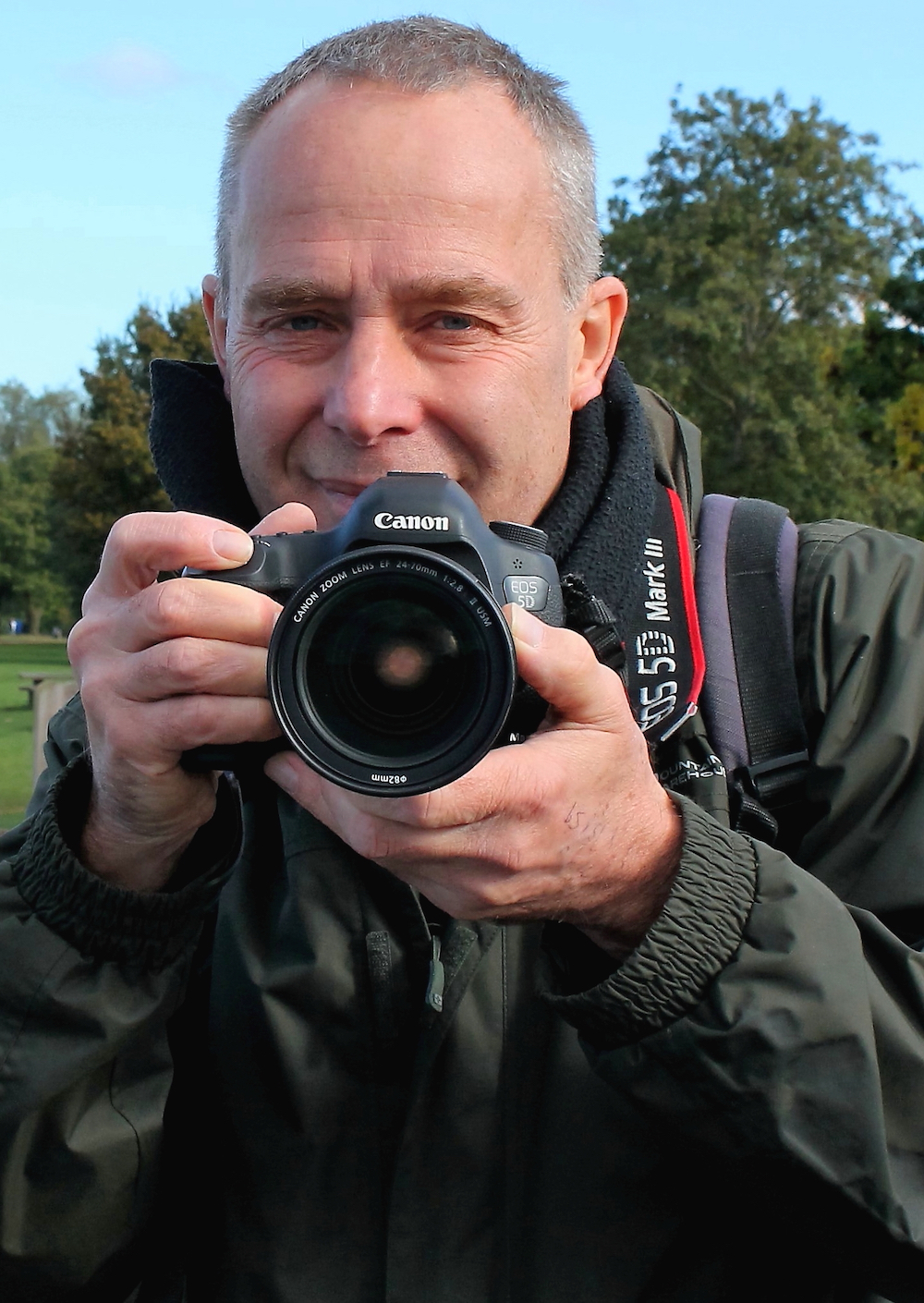
Chris Porsz pictured in 2022. © Chris Porsz
Chris Porsz began his interest in photography while hitchhiking across Europe and North Africa in the early 1970s. He started shooting images of people on the streets of Peterborough in the early 1980s. Years later this led to a newspaper column, Paramedic Paparazzo, and an ambitious project that saw him photographing the same people again, sometimes over 40 years apart.
Related articles
Street photography and the law (2022 update)
Beginners guide to Street Photography
Best Camera For Street Photography
Best lens for Street Photography in 2022
Fill the Frame documentary explores social media’s influence on street photography
How the pandemic changed street photography

